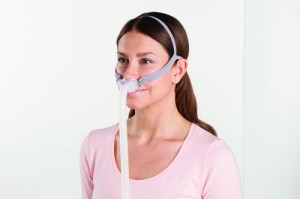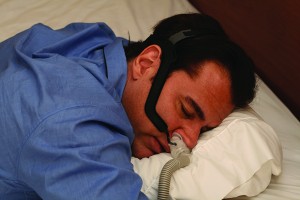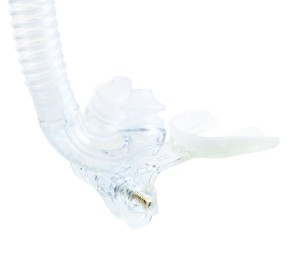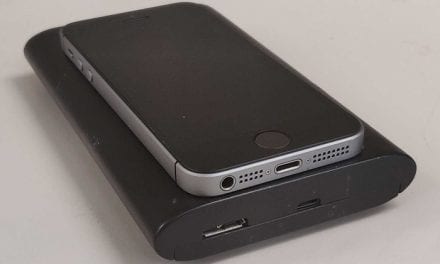New designs and technological improvements have helped spur growth in this mask category.
Nasal pillow masks are in a unique position within the CPAP therapy landscape. For those who suffer from obstructive sleep apnea, CPAP pillow masks offer a less obtrusive and easier-to-use alternative to the more common nasal masks, some manufacturers say. As a result, there has been evidence that, recently, nasal pillow masks are gaining market share in patient preference.
The “why” behind the transition and acceptance among patients is explained in a number of ways. For example, Kelly Rudolph, president of Hans Rudolph Inc, notes that the market for CPAP therapy, in general, is growing. “Awareness regarding sleep apnea has increased over the years, and the testing for the disorder has increased as well,” he says. “As a result, there are a greater number of patients learning that they have OSA and need to wear a mask at night.”
According to Ron Richard, CEO at InnoMed Technologies Inc, the design evolution of nasal pillow masks has made inroads over the last 3 to 4 years—an event that he credits to manufacturers having a firmer understanding of what sleep apnea patients today want from their treatments.
“The masks have to be in line with the patient lifestyle—they can’t interfere too much with their normal routine,” Richard says. “Patients want to read a book or watch TV before sleeping, and they don’t want their mask to be obtrusive in their nightly procedures. Making the mask more comfortable and nonobtrusive to a normal life makes the patient more compliant.”
With a distinct focus on patient lifestyles and specific treatment needs, developers of nasal pillow masks have begun to alter the shape of the category, dulling the line of distinction between pillow masks and traditional CPAP masks. In fact, according to a consumer trends analysis from online retailer CPAP.com, nasal pillow interfaces have become so popular that they are gaining ground on traditional nasal masks.
“The category for nasal pillow masks is growing because it’s a minimal and simple interface for delivering CPAP therapy,” says Andrew Hull, marketing manager for Fisher & Paykel Healthcare. “The technology has advanced in such a way that the mask can get smaller, simpler, and more durable—all the types of things that the patient needs.”
Design Enhanced

As part of the trend toward customization in nasal pillow masks, ResMed’s AirFit P10 system includes sizing options of extra small, small, and medium sizes, as well as headgear designed for just women.
According to John Goode, director of patient interfaces-Americas for ResMed Inc, the unique seal technology of a nasal pillow mask opens design opportunities not necessarily available with other masks. To this point, he cites ResMed’s AirFit P10 as a breakthrough in patient comfort and ease-of-use in the nasal pillow category.
According to Goode, the AirFit P10 system features the QuietAir mesh vent technology that diffuses air so it is virtually noiseless, resulting in less patient and bed partner disturbance. What’s more, the mask is equipped with QuickFit elastic headgear that offers a two-point auto-adjusting headgear system that minimizes facial contact while still providing comfort.
“The AirFit P10 system has color-coded cushion sizing that features small, medium, and large sizes,” Goode says. “The system also includes sizing options of extra small, small, and medium sizes in the AirFit for Her system, which offers smaller headgear designed for just women.”
Taking a broad look at what manufacturers are doing with nasal pillow mask interfaces today, it’s easy to see that the name of the game is customization. Sleepers come in all different sizes, and they all have their specific way of finding comfort while at rest.
“Our system is focused on what’s called an active sleeper, which is someone who wants to sleep on their stomach or side, or who turns from one side to the other,” Richard says. “The types of products we design allow for free movement of the patient during the night.”
According to Richard, InnoMed’s most recent design—the Aloha Nasal Pillow System—was engineered to include the company’s Arced-Track technology, which allows the angle of the pillow reservoir to be adjusted for a more customized and natural fit. What’s more, the Aloha features three different pillow sizes—small, medium, and large—and comes with all of the components required to properly size the patient, a design element that, according to InnoMed, helps eliminate the hassles of opening multiple products in order to find the right fit.
“The clinicians we talk with say they’re trying as hard as possible to get the right mask on the patient from the very first fitting,” Richard says. “When you have a system that is adjustable and can be customized to fit nearly every head size, that results in an overall reduction in costs for refits.”
Fisher & Paykel has taken a unique approach to the concept of size customization with its Pilairo Q model of nasal pillow mask. According to Hull, the system features the AirPillow Seal, which uses CPAP pressure to self-inflate, creating a gentle double seal into and around the nose. When inflated, the AirPillow Seal can move and flex in any direction without compromising the seal.
“We really listened to what patients wanted and then applied our abilities to find the solution for them,” Hull says. “Patients want smaller, simpler, higher-performing masks, and that’s the guiding principle behind the technology produced by our engineers and design group.”
The Next Evolution

The Aloha Nasal Pillow System from InnoMed was engineered to include the company’s Arced-Track technology, which allows the angle of the pillow reservoir to be adjusted for a more customized and natural fit.
A unique aspect of nasal pillow masks is their small size and their ability to make a huge impact on those who suffer from sleep apnea. “We’ve seen adoption of the technology on a global basis,” Richard says. “Throughout the last several years, patients and clinicians have become more comfortable using the nasal pillow interface. And, because of its small size and ease-of-use, I predict nasal pillow interfaces will eventually become more popular than nasal masks.”
The future of the nasal pillow mask category is prime for innovation and growth, according to Goode, and it continues to have a strong appeal for patients looking for the least obtrusive and easiest-to-use CPAP masks.
“Comfort and ease of use have always been top of mind for patients, and we don’t expect that to change,” he says.
What’s expected to change, however, is the types of technology offered within the category. For example, Richard foresees a focus on micro masks, which are smaller nasal masks that are less obtrusive and feature some of the attributes of nasal pillows.
“These are nasal masks that are quite small and compact as they fit on the face to give patients an option over having something inserted into their nostrils,” he says.

Airway Management has focused on mask preference reports and patient feedback to engineer products like its TAP PAP Nasal Pillow Mask.
Samantha McClure, operations project manager at Airway Management, says, “There are many nasal pillow masks on the market and as demand for them grows, we expect to see these products to continue to evolve to meet the changing needs of the patient. Today, patients are looking to move away from traditional masks that cover the nose and/or mouth or require straps and headgear towards less obtrusive models.” The company’s TAP PAP Nasal Pillow Mask is an example of this trend, she says, because it eliminates headgear by instead employing a precision-fit upper mouthpiece.
This type of innovation is expected within the nasal pillow mask category as companies conduct extensive market research, focus groups, and clinical trials; consult with sales teams; and meet with customers to develop the best possible solutions for nasal pillow CPAP treatment.
“Decades of science and research go into everything we design,” Goode says. “Our focus on innovation and personalization means that we’re committed to developing a good solution for every type of patient.”
Lori Sichtermann is associate editor of Sleep Review.



